| | Recommended reading for The Hermetic Principles: 'The Kybalion' by Three Initiates This anonymously-written book on the principles of 'Hermetic Philosophy' has had an enduring impact on many branches of esotericism since its first publication in 1908. Spare and concise in its language, it contains a detailed exegesis on The Kybalion, an apparently secret manuscript of initiation (no copy of which has ever been published). The book sets out the seven universal principles underlying all existence, and gives 'keys' to the disciplines required to achieve mastery of the Hermetic Art. According to the teachings, when the pupil is ready to receive the truth, then will this little book come to him or her. "When the ears of the student are ready to hear, then cometh the lips to fill them with Wisdom." |
|
The Seven Great Hermetic Principles - The Teachings of Hermes/Thoth
0 Comments
The first SPICAM (Spectroscopy for Investigation of Characteristics of the Atmosphere of Mars) instrument was built for the Russian Martian orbiter Mars 96, which was lost due to an accident in the rocket launcher. The new updated version of the instrument was built with the participation of the Space Research Institute as part of the agreement between RosCosmos and the French space agency CNES for the Mars Express orbiter. The apparatus was launched on June 2, 2003 from the Baikonur Cosmodrome using a Russian Soyuz rocket launcher with a Fregat propulsion stage. At the end of December 2003, Mars Express entered a near-Mars orbit and since then has been operating successfully, collecting data on the planet and its surroundings.
Staff of the Space Research Institute and MIPT, including Alexander Trokhimovsky, Anna Fyodorova, Oleg Korablyov and Alexander Rodin, together with their colleagues from the French laboratory LATMOS and NASA’s Goddard Center, have analysed a mass of data obtained by observing water vapour in Mars’ atmosphere using an infrared spectrometer that is part of the SPICAM instrument over a period of five Martian years (about 10 Earth years as a year on Mars is equal to 1.88 Earth years). Conditions on Mars – low temperatures and low atmospheric pressure – do not allow water to exist in liquid form in open reservoirs as it would on Earth. However, on Mars, there is a powerful layer of permafrost, with large reserves of frozen water concentrated at the polar caps. There is water vapour in the atmosphere, although at very low levels compared to the quantities experienced hereon Earth. If the entire volume of water in the atmosphere was to be spread evenly over the surface of the planet, the thickness of the water layer would not exceed 10-20 microns, while on Earth such a layer would be thousands of times thicker. Data from the SPICAM experiment has allowed scientists to create a picture of the annual cycle of water vapour concentration variation in the atmosphere. Scientists have been observing the atmosphere during missions to Mars since the end of the 1970s in order to make the picture more precise, as well as traceits variability. The content of water vapour in the atmosphere reaches a maximum level of 60-70 microns of released water in the northern regions during the summer season. The summer maximum in the southern hemisphere is significantly lower – about 20 microns. The scientists have also established a significant, by 5-10 microns, reduction in the concentration of water vapour during global sandstorms, which is probably connected to the removal of water vapour from the atmosphere due to adsorption processes and condensation on surfaces. “This research, based on one of the longest periods of monitoring of the Martian climate, has made an important contribution to the understanding of the Martian hydrological cycle – the most important of the climate mechanisms which could potentially support the existence of biological activity on the planet,” said co-author of the research Alexander Rodin, deputy head of the Infrared Spectroscopy of Planetary Atmospheres Laboratory at MIPT and senior scientific researcher at the Space Research Institute. This report was compiled by the Information policy service of RosCosmos with the participation of the press departments of the Space Research Institute(RAS) and MIPT. http://mipt.ru/en/news/water_vapour_in_martian_atmosphere_201412 Lessons From Jim Carrey's Journey of Life shared in his inspiring speech at 2014 Maharishi University of Management Graduation. Watch the full speech here : https://www.youtube.com/watch?v=Opxtl...
All footages used in this presentation have been obtained from various sources, all copyrighted material has been credited at the end of the presentation. Copyright Disclaimer Under Section 107 of the Copyright Act 1976, allowance is made for "fair use" for purposes suchrein belong to their respective copyright holders, I do not claim ownership over any as criticism, comment, news reporting, teaching, scholarship, and research. Fair use is a use permitted by copyright statute that might otherwise be infringing. Non-profit, educational or personal use tips the balance in favor of fair use. All copyrighted materials contained heof these materials. I realize no profit, monetary or otherwise, from the exhibition of this video. Paying it forward: Attorney pays stranger's fine to help him avoid felony conviction Sean Kelly : Opposing Views : 27 Dec 2014 An attorney paid a stranger's $983 fine so he could help the man avoid having a felony conviction on his record.
Colin M. Murphy, a civil attorney in Portland, OR, was sitting in the gallery of a courtroom waiting for his case to begin when he overheard the attorneys and judge from a separate case discussing the defendant, who was about be convicted as a felon simply because he couldn't pay $983 in restitution. Castor Conley, 27, a married father with a 17-month-old child, would have faced a misdemeanor sentence if he were unable to pay the fine. Murphy, having never met Conley before, said he could tell that the court did not want to overly penalize the man and were just looking to compensate a man whose truck was damaged. He also realized that a felony conviction could seriously hurt Conley's ability to get a job or rent/buy a house. Murphy was compelled to help, approaching the judge and offering to pay the fine himself. "All of us sometime in our lives have done something we would rather not have done," Murphy told The Oregonian. "And the time will come when perhaps we are going to be held accountable. And I think at that point we would like to have somebody show us mercy." Conley's attorney, Lawrence Taylor, said he had never met Murphy before he offered to cover the fine. "It was mere coincidence," Taylor said. "In fact, we were only there that day because we got a set-over because my client needed an extra week. He thought he could come up with the money." Taylor said he was shocked by Murphy's good deed. "I've practiced for 22 years, and I've never seen anything like it, and I don't expect to again." Taylor said Conley was emotional over the gesture, and thanked Murphy for his generosity. The judge reportedly told Conley that he should eventually reimburse Murphy for the fine, but Murphy said he's not concerned with getting his money back and was just happy to help. "If I get paid back, great," Murphy said. "If I don't, no problem. I'm not going to hold the kid to it." http://www.sott.net/article/290641-Paying-it-forward-Attorney-pays-strangers-fine-to-help-him-avoid-felony-conviction I send to all visitors to this website - and all of Humanity - love and positive intent for a very happy and harmonious Christmas and a peaceful and uplifting New Year. However chaotic the world may seem at present, know that greater change is at hand:
Divine Love, Light, peace and healing to all
Messenger Spirit Sunday, Dec. 21st is the northern winter solstice. At 6 pm EST, the sun will reach its lowest declination in the celestial sphere, -23.5 degrees, marking the start of winter and the longest night of the year at northern latitudes. The long night could be filled with auroras. NOAA forecasters estimate a 65% chance of polar geomagnetic storms in response to glancing blows by one or two CMEs. Happy solstice!
Big sunspot AR2242 erupted on Saturday, Dec. 20th @ 00:27 UT, producing an intense X1.8-class solar flare. This picture taken by NASA's Solar Dynamics Observatory shows a plume of material flying away from the blast site: Radio emissions from shock waves rippling through the sun's atmosphere suggest that a CME is en route. However, we are still waiting for data from SOHO coronagraphs to confirm the existence and trajectory of a massive storm cloud. If a CME is coming, it will probably take 2 to 3 days to reach Earth.
There has already been one Earth-effect: extreme UV radiation from the flare ionized our planet's upper atmosphere and blacked out HF radio communications over Australia and the South Pacific. Below 10 MHz, transmissions were strongly attenuated for more than two hours. Stay tuned for updates. www.spaceweather.com Dec. 16, 2014: Since 2012, NASA's Voyager 1 spacecraft has experienced three 'tsunami waves' in interstellar space. The most recent, which reached the spacecraft earlier this year, is still propagating outward according to new data. It is the longest-lasting shock wave that researchers have seen in interstellar space. "Most people would have thought the interstellar medium would have been smooth and quiet. But these shock waves seem to be more common than we thought," said Don Gurnett, professor of physics at the University of Iowa in Iowa City. Gurnett presented the new data Monday, Dec. 15 at the American Geophysical Union meeting in San Francisco. The Voyager 1 spacecraft has experienced three "tsunami waves" in interstellar space, causing surrounding ionized matter to ring like a bell. A "tsunami wave" occurs when the sun emits a coronal mass ejection, throwing out a magnetic cloud of plasma from its surface. This generates a wave of pressure. When the wave runs into the interstellar plasma -- the charged particles found in the space between the stars -- a shock wave results that perturbs the plasma. "The tsunami causes the ionized gas that is out there to resonate -- to "sing" or vibrate like a bell," said Ed Stone, project scientist for the Voyager mission based at California Institute of Technology in Pasadena.
This is the third shock wave that Voyager 1 has experienced. The first event was in October to November of 2012, and the second wave in April to May of 2013 revealed an even higher plasma density. Voyager 1 detected the most recent event in February, and it is still going on as of November data. The spacecraft has moved outward 250 million miles (400 million kilometers) during the third event. "This remarkable event raises questions that will stimulate new studies of the nature of shocks in the interstellar medium," said Leonard Burlaga, astrophysicist emeritus at NASA Goddard Spaceflight Center in Greenbelt, Maryland, who analyzed the magnetic field data that were key to these results. It is unclear to researchers what the unusual longevity of this particular wave may mean. They are also uncertain as to how fast the wave is moving or how broad a region it covers. The second tsunami wave helped researchers determine in 2013 that Voyager 1 had left the heliosphere, the bubble created by the solar wind encompassing the sun and the planets in our solar system. Denser plasma "rings" at a higher frequency, and the medium that Voyager flew through was 40 times denser than what had been previously measured. This was key to the conclusion that Voyager had entered a frontier where no spacecraft had gone before: interstellar space. "The density of the plasma is higher the farther Voyager goes," Stone said. "Is that because the interstellar medium is denser as Voyager moves away from the heliosphere, or is it from the shock wave itself? We don't know yet." Gurnett, principal investigator of the plasma wave instrument on Voyager, expects that such shock waves propagate far out into space, perhaps even to twice the distance between the sun and where the spacecraft is right now. Voyager 1 and its twin, Voyager 2, were launched 16 days apart in 1977. Both spacecraft flew by Jupiter and Saturn. Voyager 2 also flew by Uranus and Neptune. Voyager 2, launched before Voyager 1, is the longest continuously operated spacecraft and is expected to enter interstellar space in a few years. Credits and more information:Production editor: Dr. Tony Phillips | Credit: Science@NASA JPL, a division of Caltech, built the twin Voyager spacecraft and operates them for the Heliophysics Division within NASA's Science Mission Directorate in Washington. For more information on the Voyager mission, visit http://voyager.jpl.nasa.gov RT : 17 Nov 2014
"I wish Duspavoni, my creation, could get to revolutionize the lives of people with sight problems, partial or total visual impairment," he told Ruptly. The shoes have three ultrasound sensors placed inside the sole - in the frontal, lateral, and back areas. The sensors emit ultrasound waves which are reflected by surrounding objects and come back to the sensor. The shoe vibrates depending on the distance and position of the objects. "The closer the object is, the more the device vibrates," Bustamante said. "If the object is ahead, the tip of the shoe vibrates. If it is on the side, the sole vibrates, and if it is behind, the heel vibrates." The device can detect different kinds of materials, people and animals within a 25-inch (63.5 centimeter) radius of the wearer. It is equipped with rechargeable batteries which can be charged by a USB cable connected to a computer, or even by a mobile phone charger. The time needed for a total charge is about five hours. The owner can then use the shoes for three or four days. The inventor said the idea for Duspavoni came after a conversation with a friend who was losing her vision. He created the shoes to replace the traditional white cane with something more discreet, which may create less of a social stigma. "She told me young blind people do not like the cane because they feel it stigmatizes them." Bustamente told EFE. "The shoes have been conceived for young blind people, between 10 and 25 years old, as they are most refusing to use the white cane." Project Compassion Stanford : Huffington Post : 16 Nov 2014
We now know that this often overlooked, virtually cost-free remedy has a statistically significant impact on our physical health. For example, the positive effect of kindness is even greater than that of taking aspirin to reduce the risk of a heart attack or the influence of smoking on male mortality. And it doesn't even require a trip to the pharmacy.
Those of us who work in the health care profession and study medicine have long believed in the value of a kind, compassionate bedside manner. But now, this belief isn't just a nice notion - it's sound science. The Dignity Health/CCARE scientific literature review shows that when patients are treated with kindness - when there is an effort made to get to know them, empathize with them, communicate with them, listen to them and respond to their needs - it can lead to the following outcomes:
The review also found that patients aren't the only ones who see better results from kind treatment - the doctors, nurses, and caregivers who provide the kind treatment benefit as well. A kinder work environment helps employees feel more engaged and less exhausted, which is incredibly important to caregivers who often work long and unpredictable hours in high-pressure jobs. In the weeks and months ahead, we plan to build on this research and translate the findings into practices and guidelines that health care providers, doctors, nurses, and other caregivers can follow during their interactions with patients. So often, the debate about health care in America has focused on how to cut costs without restricting people's access or reducing the quality of their care. Well, institutionalizing kinder practices in hospitals, doctors' offices, and care facilities across the nation is a virtually free way of improving quality and generating better outcomes that can lead to even lower costs. It's a no-brainer. At the very least, this research review proves that in the context of health care and medicine, kindness shouldn't be viewed as a warm and fuzzy afterthought, something nice to show after the "real" medicine is administered. Instead, kindness should be viewed as an indispensable part of the healing process. After all, it's been in the Hippocratic Oath for over a century: "I will remember that... warmth, sympathy, and understanding may outweigh the surgeon's knife or the chemist's drug." So it's the responsibility of those who work and study in the field of medicine to remember the spirit of this pledge, and make acts of kindness not-so-random for the people we serve and heal every day. http://www.sott.net/article/289283-Kindness-holds-the-power-to-heal Jay Walljasper : Alternet : 03 Dec 2014
A month later Builder magazine (a construction trade journal) announced on its cover, "Walkability. Why we care...and why you should too." The reason? Simple: "Increasingly, the market is demanding places where homeowners can hoof it." The New Yorker weighed in last September quoting the new book A Philosophy of Walking, which asserts that walking "makes it possible to recover the pure sensation of being, to rediscover the simple joy of existing."
This sheer pleasure of walking is highlighted in one of the year's top music videos, "Happy" by soul singer Pharrell Williams. It's an exuberant celebration of life on foot showing all kinds of people (including Magic Johnson, Steve Carrell and Jimmy Kimmel) strutting, stepping, striding and sashaying down city streets. It's been viewed 465 million times on You Tube. There is sure to be continuing coverage of foot power next year when the Surgeon General's office releases a Call to Action on the health and social benefits of walking and walkable communities - a step some are comparing to the 1964 Surgeon General's Report on the dangers of smoking. Already the federal Centers for Disease Control and Prevention recommends all adults engage in 30 minutes of physical activity such as walking five days a week based on the proven connection between moderate physical activity and lower incidences of major medical problems - not just heart disease, diabetes and obesity, as you'd expect, but also depression, dementia, anxiety, colon cancer, osteoporosis and other serious conditions. This flurry of attention about walking is more than a flash-in-the-pan. Evidence that millions of Americans' are now rediscovering walking for transportation, fitness and fun is as solid as the sidewalk beneath our feet. Americans Are Getting Back on their Feet "Walking is the most common form of physical activity across incomes and ages and education levels," explained Thomas Schmid of the Centers for Disease Control and Prevention at the Pro-Walk, Pro-Bike Pro-Place conference in Pittsburgh this fall. The CDC's most recent research shows the number of Americans who take a walk at least once a week rose from 56 percent in 2005 to 62 percent in 2010 - which represents almost 20 million more people on their feet. Speaking on the same panel, Paul Herberling of the US Department of Transportation noted that 10.4 percent of all trips Americans make are on foot - and 28 percent of trips under a mile. For young people, it's 17 percent of percent of all trips. Americans walk most frequently for exercise, errands and recreation, according to the National Highway Traffic Safety Administration. Last year the first-ever Walking Summit was held in Washington DC, drawing more than 400 people from 41 states and Canada representing 235 organizations ranging from the PGA Tour to the Sioux Falls (South Dakota) Department of Health. A second summit is scheduled for October 28-30, 2015 in Washington, DC. The 2013 summit, which sold out weeks in an advance, marked the birth of a new walking movement committed to: 1) encouraging everyone to walk more; and 2) boosting policies, practices and investments that make communities everywhere more walkable. It was convened by the Every Body Walk! Collaborative, a joint effort of more than 100 influential organizations across many fields to promote walking as part of the solution to problems ranging from chronic disease and health care costs to climate change and the decline of community. Read more at : http://www.sott.net/article/290182-Walking-The-incredible-benefits-of-humankinds-most-basic-form-of-exercise Lisa Campbell : The Independent : 16 Dec 2014 The founder of a quietly-growing empire of social cafes has called on a change in the law to prevent the UK's "criminal" levels of food waste - especially by supermarkets - while so many go hungry. Adam Smith, founder of The Real Junk Food Project, in Armley, Leeds, feeds his punters on goods that would otherwise have been thrown away by supermarkets, independent grocers and food banks. The 29-year-old trained chef cooks up stews, casseroles, soups and cakes with the unwanted food, charging a "pay as you feel" policy - allowing punters to pay what they feel they can, and if that is nothing, they can help with the washing up. In just 10 months he has fed 10,000 people on 20 tonnes of unwanted food, raising over £30,000.
The cafe has had such resonance in a world with such high food wastage and high hunger levels it has inspired 47 other "pay as you feel" cafes to spring in the past few months in Manchester, Bristol, Saltaire - with the concept even exported as far away as Los Angeles and Brazil, Warsaw and Zurich. But Mr Smith says The Real Junk Food Project - which is in the process of being registered as an official charity - is about more than simply feeding those who might otherwise go hungry. "It is bringing people from different demographics together that doesn't involve money. People are opening Junk Food Projects because they have had enough of what is going on in society and care about what is happening to other human beings," he said. "It is a revolution." Mr Smith wants the law to be changed to prevent supermarkets throwing so much food away for fear of prosecution - and he wants more pressure on supermarkets to be compelled to work with organisations like his. Currently, a retailer will be prosecuted if it sells food after the use-by date, but not before the "best-before" date. Despite this, supermarkets from across the sector regularly throw food out before its "best-before" date and, in Mr Smith's experience, are scornful about working with enterprises like his, which would happily take it. "Supermarkets are a pain in the arse," Mr Smith said. "They do not want anything to do with us. Many look down on us, I've had one manager of one well-known supermarket even spit in my face. We are breaking the law in their eyes. But we want to fight the law and take the fight to the general public." Mr Smith said the cafe regularly sources its food from some rather unorthordox sources. "We regularly take food from supermarket bins if we have to," he said. "We watch them throw it away, then we go and take it back out again 10 minutes later. Over 90% of the goods are perfectly fine." He said he recently took several jars of caviar which did not go off until December 2015 from one supermarket bin and he has also served punters salmon, scallops and even steak in his cafe from donations. However, the tide is starting to turn, and Mr Smith revealed he is currently in talks with a national supermarket to provide food to his cafe. Nandos restaurant chain has also been "fantastic" and has agreed to help Real Junk Food Projects around the country. "We now get all our chicken from them," Smith said, which equates to around 100-150 kilos of frozen chicken a week. "They have a 'no chuckin' our chicken' motto" he said, adding: "They give it to us because legally we will take responsibility for it." When asked if he was concerned about being prosecuted under the law himself, Mr Smith said: "Environmental Health came to inspect us and gave us three out of five stars. Everyone is completely aware of what we are doing. We want the law changed on best before dates to get better regulation - we have fed 10,000 with this food and not one has got ill." Mr Smith agrees more needs to be done to teach people the basics of cooking in schools. "We cook the basics in the cafe because many people don't know how to do the basic things with food," he said. "I know people who think they don't know how to make a fruit salad and they are 40-years-old. They didn't get it was just chopping up fruit and putting it into a bowl. We have realized there is a serious lack of basic education in the UK in terms of food awareness, what to make and where it comes from. "We cook basic sides, sauces, stews, casseroles, cakes, to get people eating this sort of food again and it is so easy to make." A new "pay as you feel" cafe which opened in Saltaire, West Yorkshire, at the weekend, The Saltaire Canteen, hopes to address this issue by providing cookery workshops for single men. It too hopes to strengthen the community with the free cafe. Andy McNab, local outreach coordinator for St Peter's Church in Shipley, who is running the cafe, said: "We want to debunk some of the stereotypes about the people who use food banks. The reality is anybody can end up using one. It doesn't take anything to get into a place where someone ends up losing their job and their social networks weren't as strong as they thought they were to fall into food crisis. It can happen very suddenly." You can read the article in its entirety at : http://www.sott.net/article/290256-UK-Real-Junk-Food-Project-has-fed-10000-people-using-20-tonnes-of-unwanted-food-in-a-country-crippled-by-austerity-measures Russia donates Christmas tree to struggling Notre Dame Cathedral Lucy Williams : BBC : 14 Dec 2014 Russia has donated a 25m tree Christmas tree to the Notre Dame cathedral in France, following an appeal for help. The cathedral had struggled to raise the money for its annual tree and appealed to foreign embassies in Paris for assistance.
"It was a surprise but it won't create problems. It was a gift. No money changed hands. And if it helps to build bridges, so much the better.", said one of the Parisian clergy. The surprise donation comes at a time of strained relations between the two countries, over Russia's involvement in the conflict in Ukraine. http://www.sott.net/article/290142-Russia-donates-Christmas-tree-to-struggling-Notre-Dame-Cathedral On Dec. 9th, aurora tour guide Chad Blakley of Sweden's Abisko National Park was warming up inside a Sami hut, when he looked through the door and noticed the snow turning green. "I rushed outside," he says, "and discovered one of the most beautiful aurora displays I had ever seen dancing overhead." In addition to green, there was a rare and remarkable fringe of pink:
Geminid meteor activity is picking up as Earth moves deeper into the debris stream of rock comet 3200 Phaethon. During the past 48 hours, NASA's network of all-sky cameras have detected 40 Geminid fireballs over the USA. Last night, this one disintegrated inside a Moon halo over the Kitt Peak National Observatory in Arizona:
|
QUICK INFO
Author:
_Messenger Spirit This section is for interesting items which are brought to my attention but which do not merit a separate article.
I welcome your comments, questions or suggestions on any topics you wish to contribute to this section. Please submit these on the Contact and Feedback Form PLEASE DO NOT SUBMIT COMMENTS ON THE FORM WHICH APPEARS UNDER ITEMS ON 'QUICK INFO'; THIS SYSTEM IS NOT WORKING. Categories
All
Archives
July 2024
|
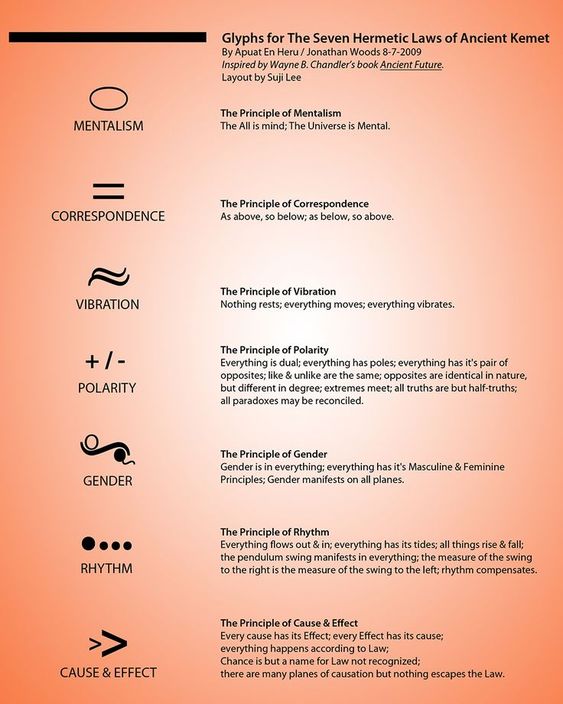
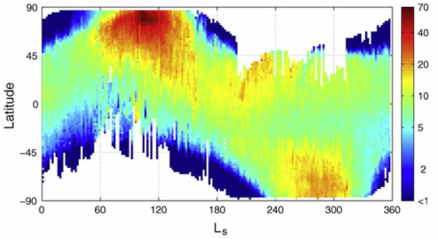
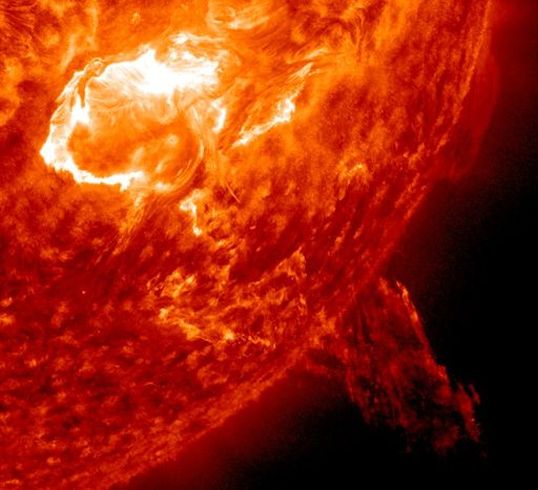
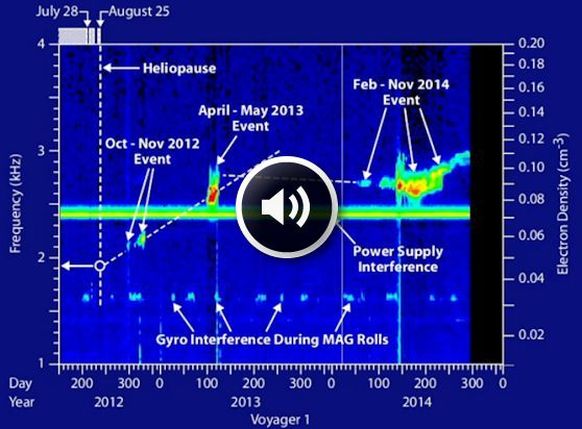
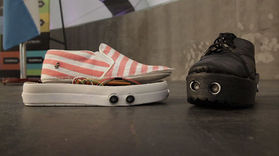
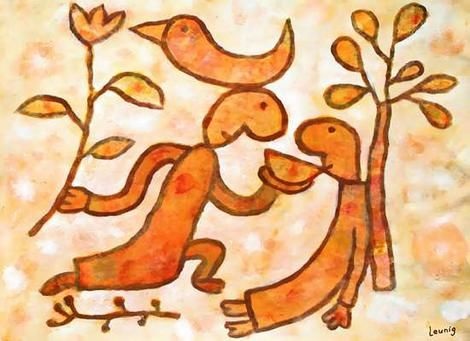
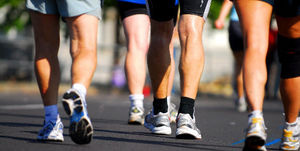
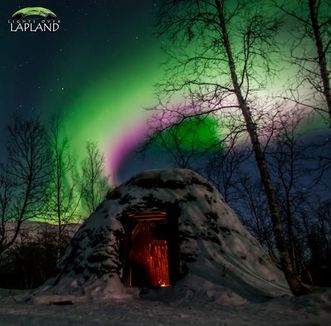
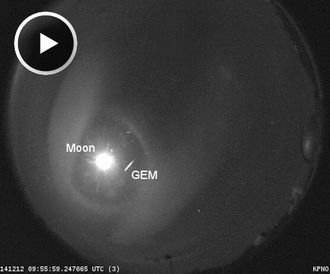
 RSS Feed
RSS Feed